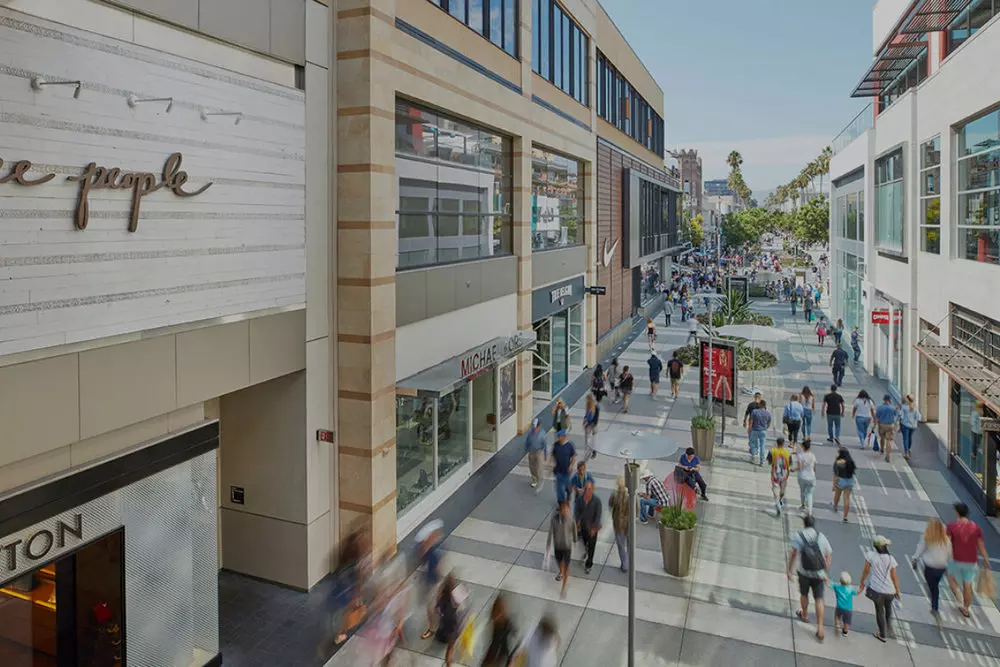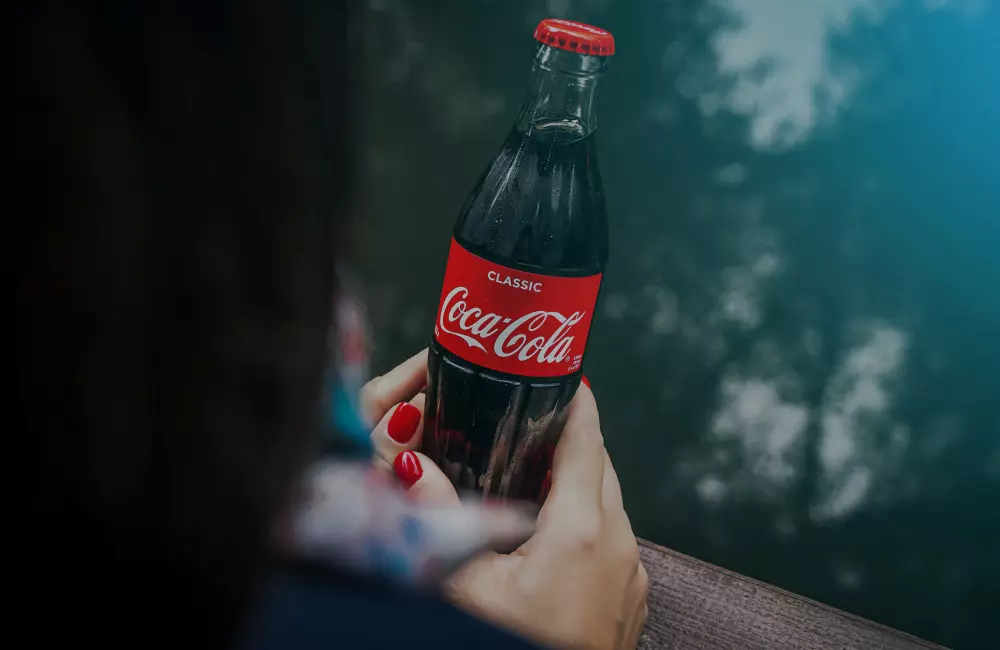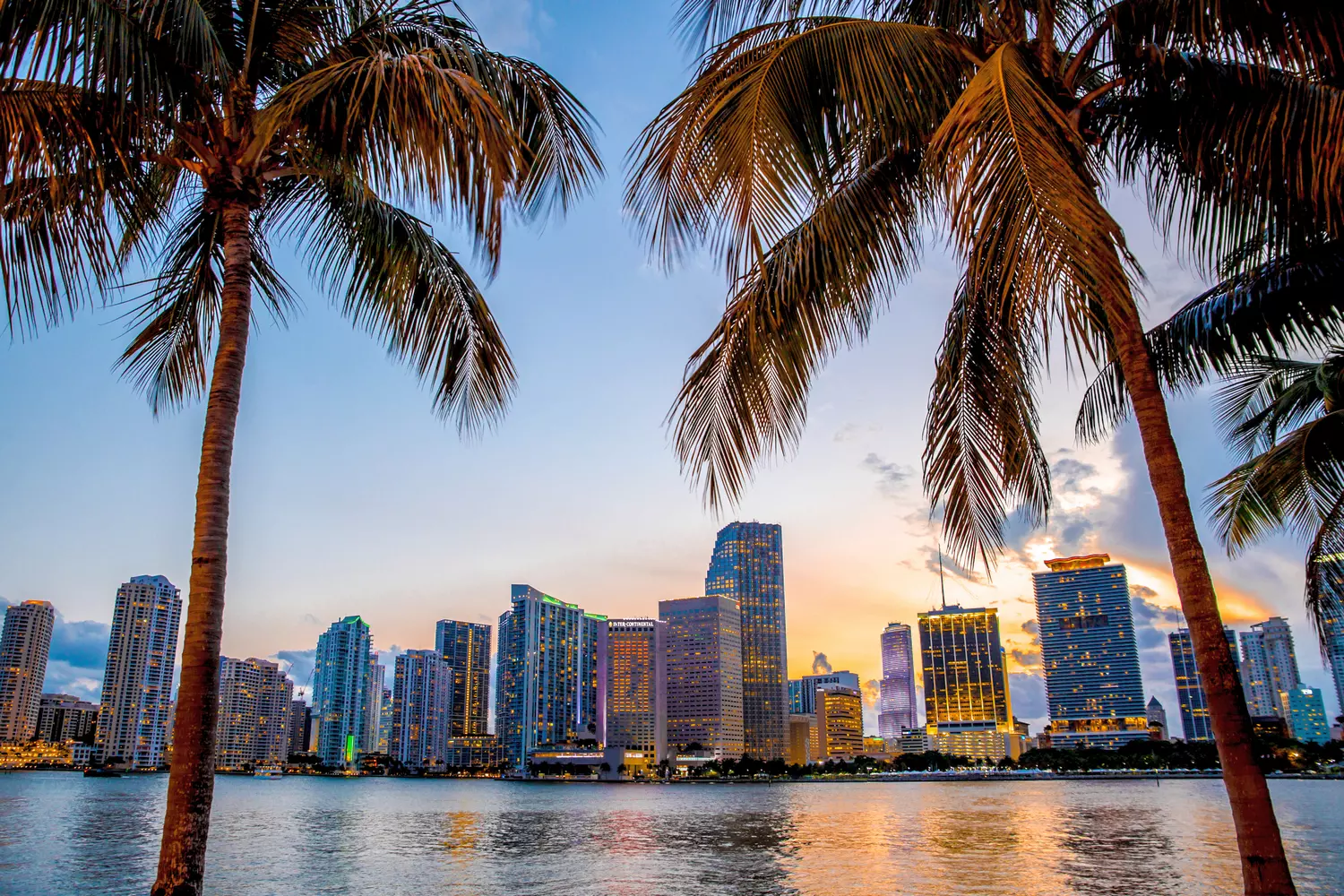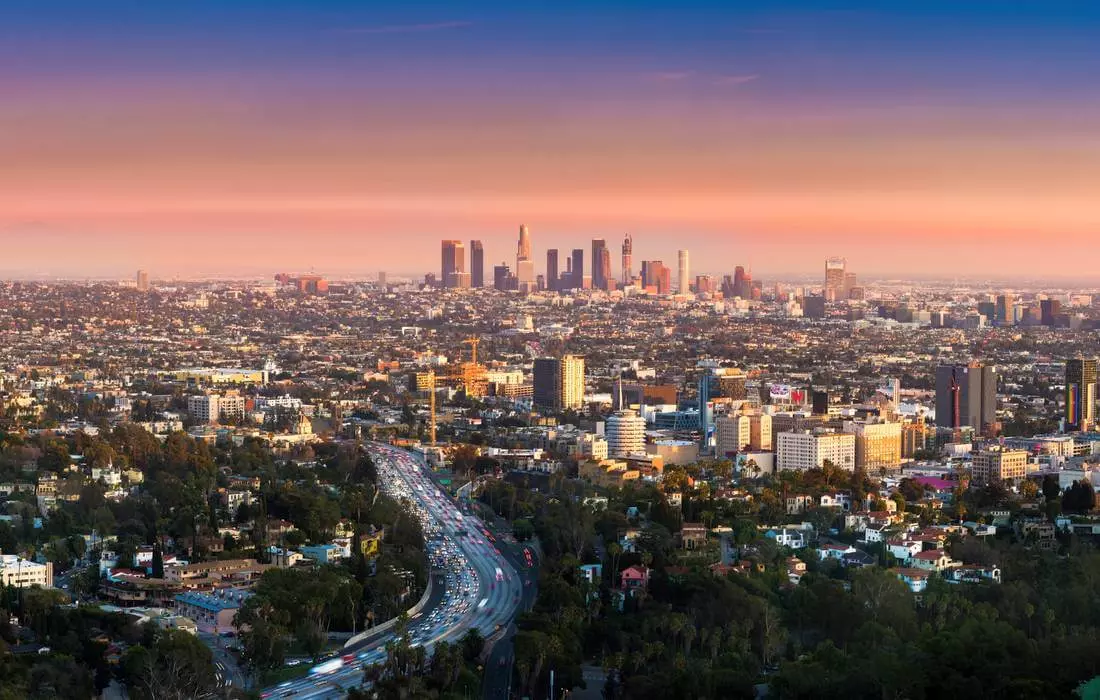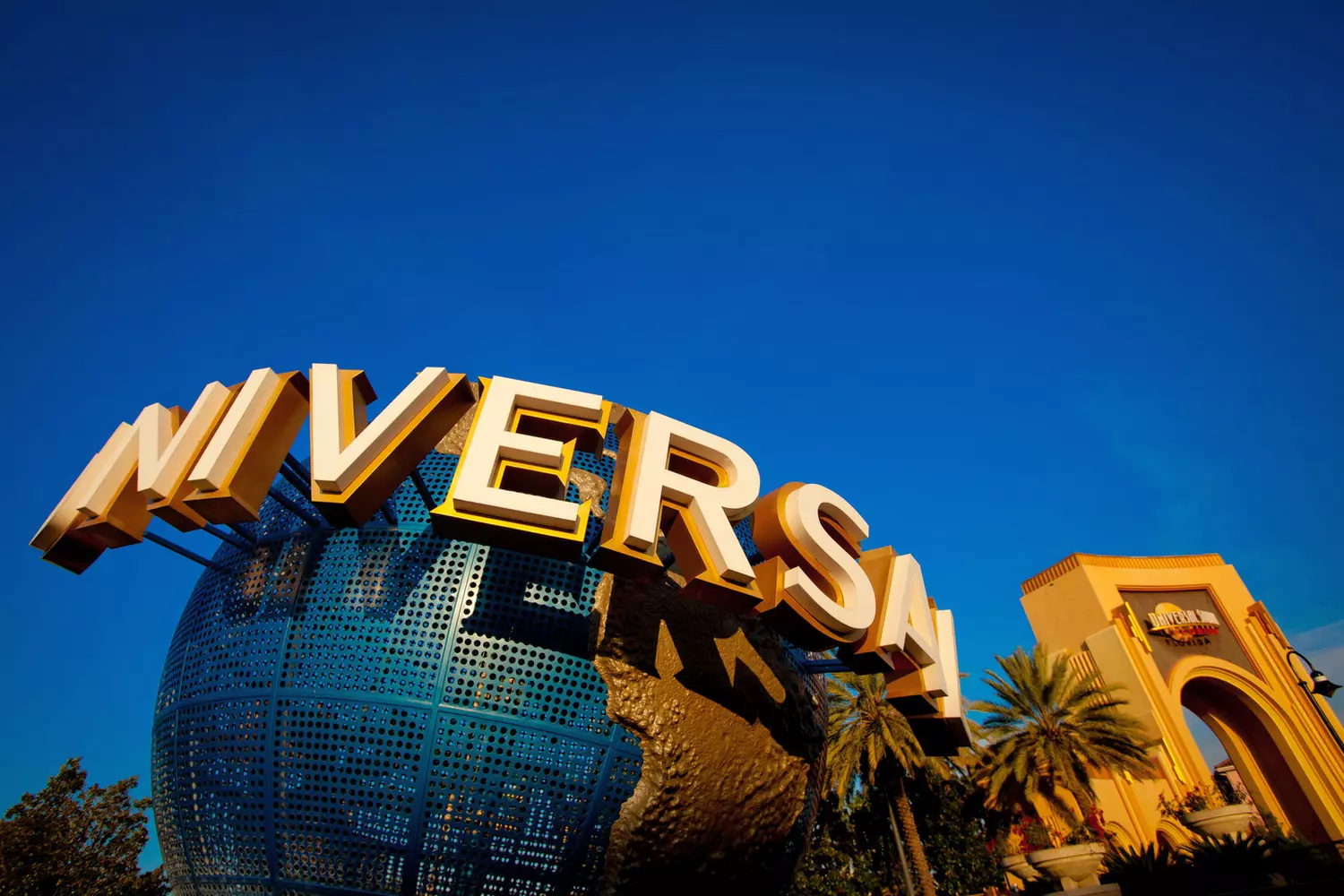Supermarkets in the USA are not just places where you buy milk, bread, and apples. They are a whole cultural phenomenon, intertwining economy, traditions, lifestyle, and even the psychology of Americans. Here you can meet neighbors, exchange news, grab a coffee on the go, and sometimes even have a first date between the pasta and wine aisles.
In America, going to the store is almost a ritual. For some, it’s the weekly “big grocery run” for the family, when shopping carts are filled with kilograms of fruit, meat, household chemicals, and suddenly — a new TV on sale. For others, it’s a Friday evening trip to Target “just for something small,” which mysteriously ends with a cart full of candles, pillows, and sweets.
American supermarkets amaze with their scale:
- Parking lots with hundreds of spaces;
- Sales floors the size of a football field;
- An assortment ranging from fresh fish and organic bread to smartphones and furniture;
- Food courts, pharmacies, gas stations, and even vaccination zones — all under one roof.
There’s no sense of rush here. People calmly wander between aisles, examine packaging, compare prices, and chat with staff. On weekends, major chains turn into hubs of attraction: tastings, mini-concerts, prize draws, and even cooking masterclasses are held.
That’s why American supermarkets are about more than just food. They are places where you can feel the “pulse” of the neighborhood, see what people live for, what they value, and what they’re willing to spend money on.
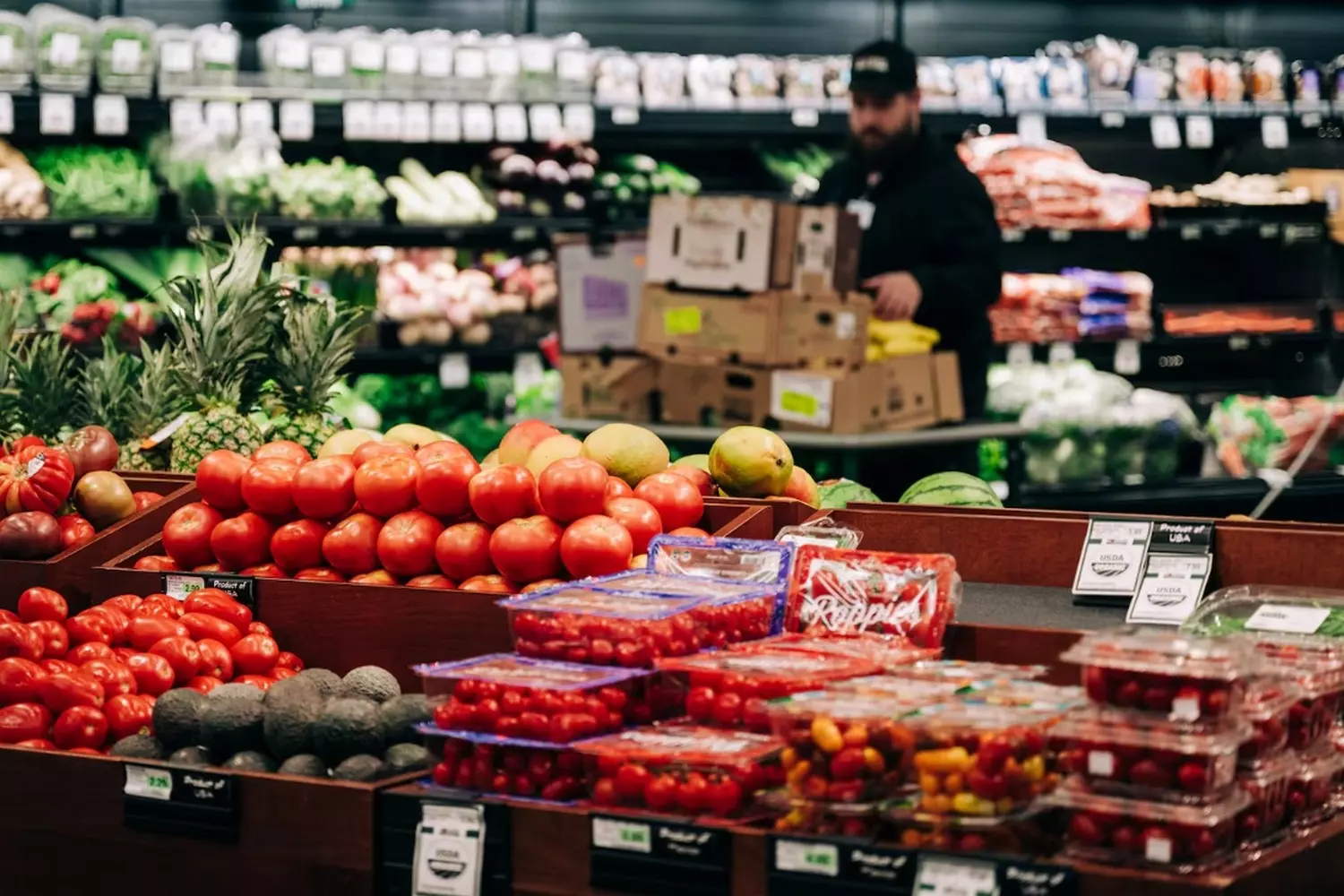
In 2019, Walmart stores in Texas alone sold enough bananas to wrap around Earth’s equator more than twice.
How America Invented the Supermarket: From Corner Store to Giant Hypermarket
Just a hundred years ago, grocery shopping in the USA looked very different. It was a small corner store — with wooden floors, a counter, and a shopkeeper who knew every neighborhood resident by name. You would approach, dictate your list, and he would move between the shelves gathering your order: a bag of flour in paper wrapping, a liter of milk in a glass bottle, a bunch of herbs tied with twine.
This continued until the 1930s, when Kingston, New York, saw the opening of King Kullen — the world’s first supermarket in the modern sense. It was a real breakthrough: customers were allowed to walk the aisles themselves, pick out products, and place them in a basket.
The term “supermarket” back then sounded like a marketing gimmick. People thought it was something out of this world — “super,” “new,” “modern.”
What changed with the arrival of supermarkets:
- Free access to shelves
You decided what and how much to take yourself. - Huge spaces
Dozens of product categories gathered under one roof. - Lower prices
Because turnover increased and operating costs decreased.
For Americans, this was a cultural shock. Women — the main shoppers of that era—gained the freedom to choose and compare, while store owners noticed that average spending per visit multiplied.
By the 1950s, supermarkets had pushed out small shops. The first chains appeared — Piggly Wiggly, Safeway, A&P. They started issuing discount coupons, running promotions, and expanding assortments — now supermarkets sold not only food but also household chemicals, cosmetics, and children’s goods.
Today, a supermarket in the USA is not just a store. It is a multifunctional complex where you can:
- Fill up your car at a branded gas station;
- Pick up a package from an Amazon locker;
- Grab a bite in the food court or take home a ready dinner;
- Get a medical consultation or vaccination at a pharmacy clinic;
- Pay bills and use an ATM;
- Drop off clothes for dry cleaning.
In essence, the supermarket has become a “city within a city” — a place where everyday needs are met and where a small but vibrant slice of American life unfolds.
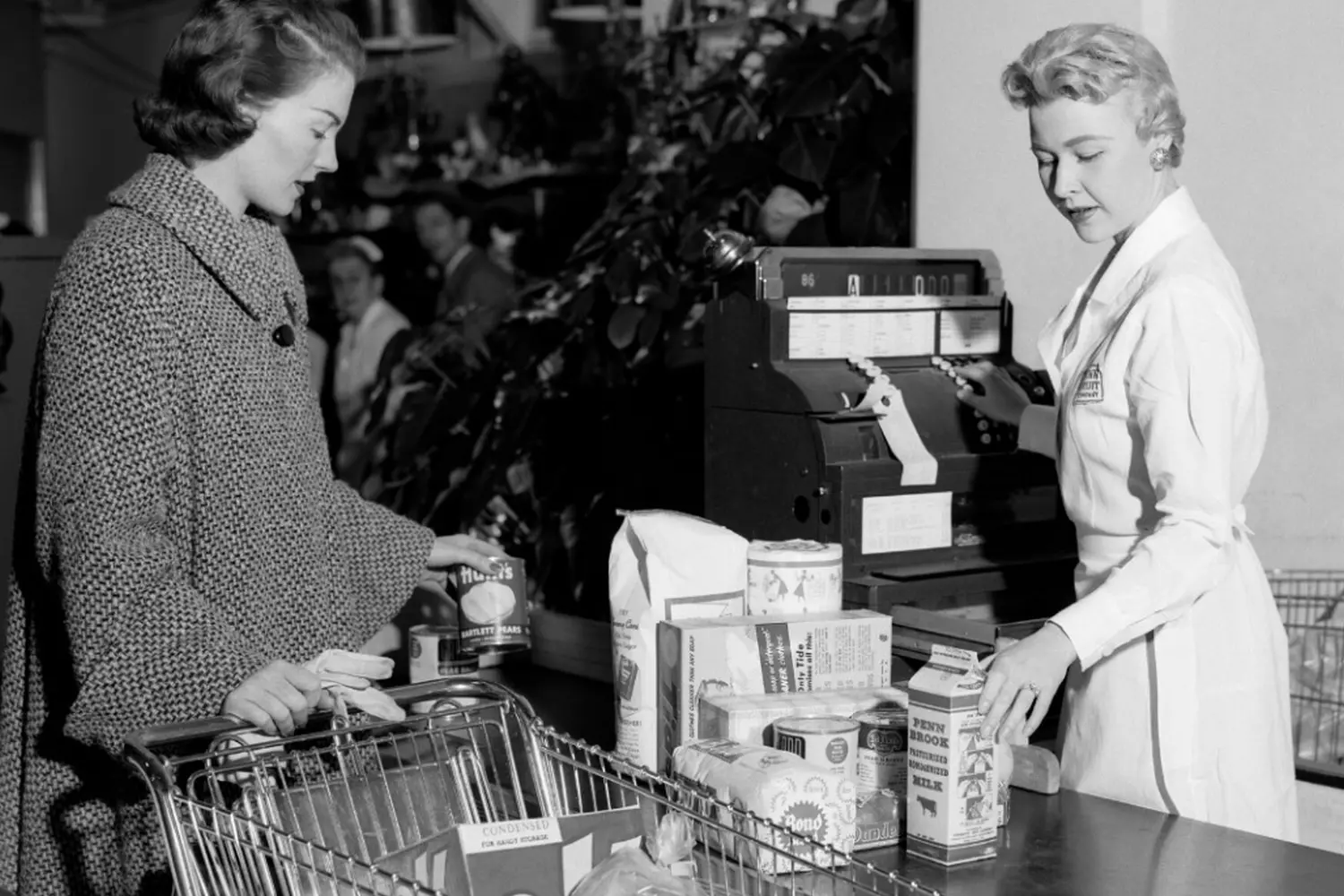
Walmart — the King Who Rules Without a Crown
Walmart in America is more than just a store. It’s a symbol of an era — a kind of “democracy of consumption” where you can buy almost anything, usually cheaper than anywhere else.
The story began in 1962, when Sam Walton, a former department store manager, opened his first store in the small town of Rogers, Arkansas. The idea was simple: sell at low prices but make more profit through volume. The concept worked so well that within 10 years Walmart became one of the fastest-growing chains in the USA.
Today, Walmart operates over 4,600 supermarkets across the country (plus thousands more worldwide) and serves millions of customers daily.
Why Walmart Became a Favorite of Millions (and a Target of Criticism)
- 01. Legendary Low Prices — The Motto “Save Money. Live Better”
Walmart negotiates with suppliers to keep purchase prices minimal. Thanks to massive buying volumes, the chain sets terms that benefit the customer. - 02. A Range “From Toothpicks to TVs”
Groceries, household chemicals, electronics, clothing, furniture, automotive goods, sporting equipment — you can get everything for moving or vacation in one visit to Walmart. - 03. 24/7 Operation
Many stores are open round-the-clock, which is especially convenient for students, drivers, and night owls who remember the empty fridge at 2 a.m. - 04. Private Labels
- Great Value
Products that often match expensive brands in quality but cost significantly less. - Equate
Medications, vitamins, and cosmetics. - George
Stylish yet affordable clothing.
Interesting fact: Walmart is the largest private employer in the USA. The company employs over 1.5 million people, a number comparable to the population of entire countries like Estonia or Bahrain.
Visiting a Walmart in a small American town, you’ll see spacious aisles filled with essentials: grains, dairy, tools, gardening supplies, hunting gear. Everything is highly practical.
In big cities, the picture changes: more premium products, fresh gourmet foods, trendy clothing brands, electronics, and home goods. In some urban locations, Walmart even experiments with coffee shops and mini food courts.
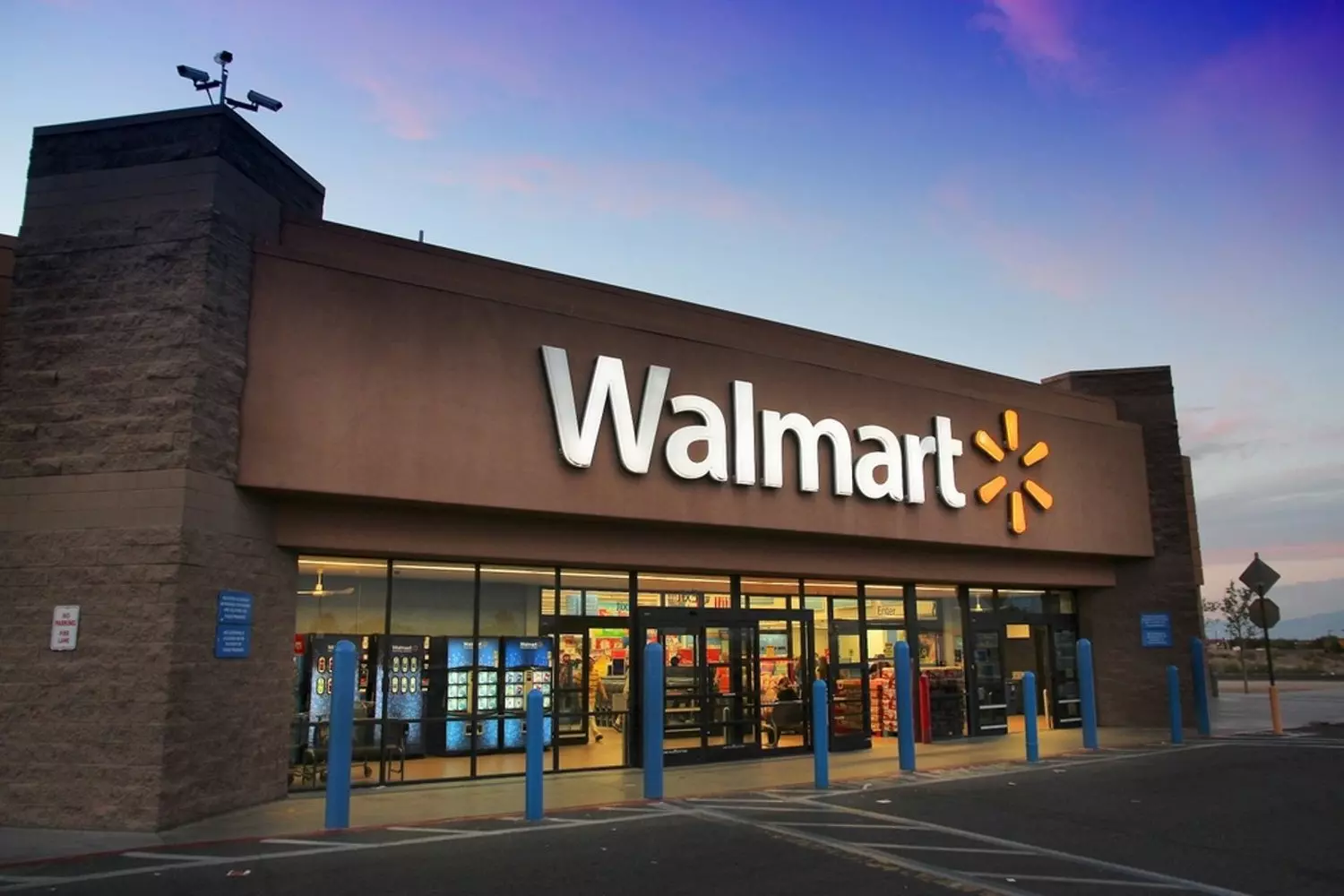
Kroger — the Supermarket That Smells Like Home
If Walmart is associated with scale and low prices, then Kroger stands for coziness, freshness, and the feeling that you’re stepping into a store where they know you by name. Founded in 1883 in Cincinnati by Bernard Kroger, the chain began as a small grocery shop. The entrepreneur’s motto was simple: “Never sell anything you wouldn’t take home yourself.”
- 01. From Corner Store to Giant
Bernard Kroger opened his first store at the young age of just 23, investing his own $372. He focused on quality and fair pricing — and as it turned out, this became the golden formula for success. Today, Kroger operates more than 2,700 supermarkets across America, including subsidiaries like Ralphs, Fred Meyer, and Smith’s. - 02. What Makes Kroger Special
- The welcoming smell at the entrance
In-store bakeries bake bread, rolls, and pies right on site. The aroma of fresh baking creates that “magnetic” atmosphere that often draws people into Kroger even without a shopping list. - Restaurant-quality ready meals
From fresh salads and sushi to hot rotisserie chicken and pasta — the selection of prepared foods is impressive. For many Americans, it’s a quick way to grab a “home-cooked” dinner without cooking. - Loyalty programs that really work
Kroger is known for its Kroger Plus Card — the discounts are real, not symbolic. Moreover, bonus points can be exchanged for discounted gas at the chain’s fueling stations. - Online ordering and curbside pickup
Kroger actively develops delivery and the ClickList service, where you order groceries online and an employee loads them directly into your car trunk.
Interesting fact: Kroger was one of the first supermarkets in the USA to use electronic price tags and to test grocery delivery by drones.
Kroger is appreciated for always having fresh fruits and vegetables, clean and neatly arranged sales floors, friendly staff, and a sense of care. It’s one of those cases where a supermarket becomes part of the neighborhood’s daily life: you can meet neighbors, chat with the cashier who already remembers your favorite products, and leave feeling genuinely welcomed.
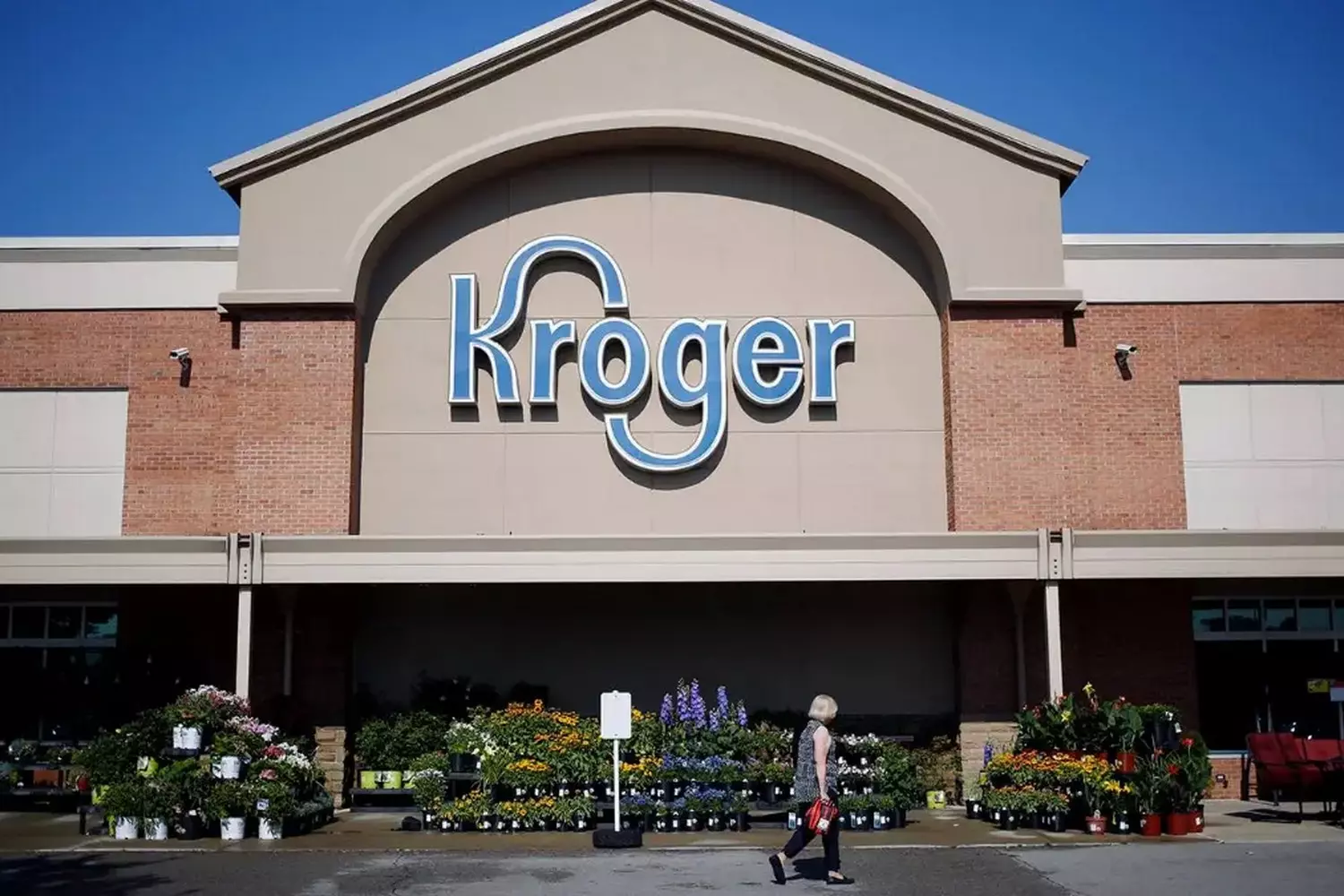
Costco — the Club You Can Enter Only With a Membership Card
Costco is more than just a supermarket. It’s an exclusive club open only to those with a paid membership card. But anyone who’s crossed the threshold of this “warehouse store” knows it’s worth it.
- 01. How It Works
Costco was founded in 1983 in Seattle, Washington, and quickly revolutionized shopping. Instead of typical aisles and neat displays, you find massive warehouse spaces with pallets, towering shelves, and industrial lighting. Everything is in bulk: 2-kg coffee bags, cases of cleaning supplies, TVs as big as half a wall, and cakes the size of a washing machine lid. - 02. Why People Love Costco
- Bulk Buying Philosophy
Costco is ideal for buying in large quantities. It’s a paradise for big families, small business owners, and those who like to stock up. - Kirkland Signature Brand
Costco’s private label covers everything from coffee and nuts to down jackets and luggage. Often, Kirkland products are made by the same factories as premium brands but carry a “club” label at a fraction of the price. - The Legendary $1.50 Hot Dog
The food court menu is a legend on its own. The hot dog with soda priced at $1.50 has been sold since 1985, and management promises it will never get more expensive. For many, it’s a ritual: shop first, then grab a quick bite right in the store. - Cheap Gasoline
Costco gas stations are known for having some of the lowest prices in the U.S. For members, this is yet another reason to join the club.
Interesting fact: Costco’s management has admitted that sometimes they sell products at near cost or even at a loss (like the hot dog), simply to retain customers and build a “brand legend.”
The main requirement is to get a membership. It costs on average $60 per year for the basic level and $120 for the Executive premium card (which offers cashback bonuses). Many consider it paid off after just a few visits.
Costco combines pragmatism with a club-like atmosphere. It’s not about flashy displays but pure value. You come for groceries and leave with a coffee machine, a set of luggage, a winter jacket, a 5-kg cake, and a hot dog in hand — feeling like you saved a lot.
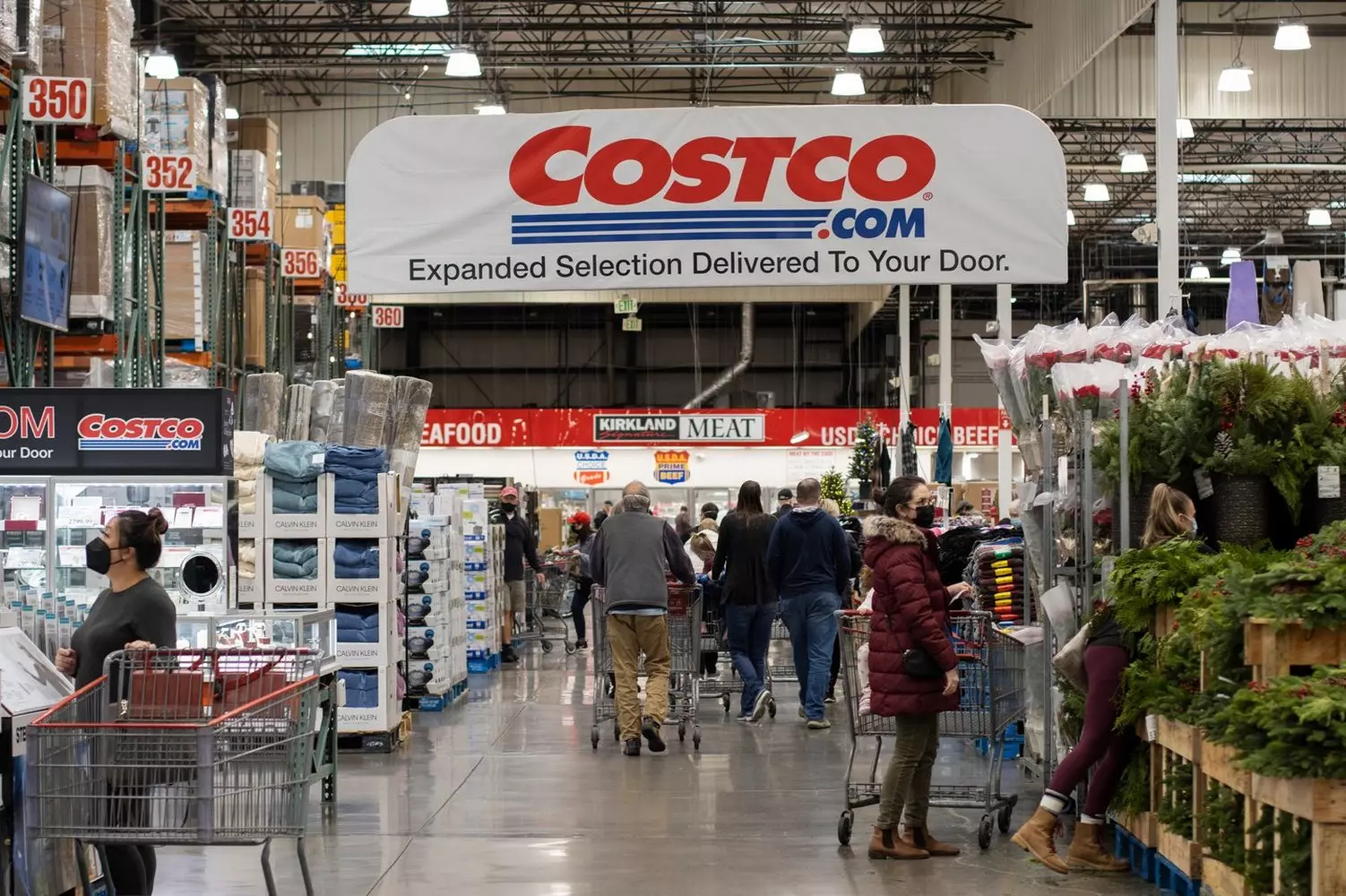
Target — the store you enter for bread and leave with a whole new life
If Walmart represents the mass market, and Costco is the club for bulk buyers, then Target is the supermarket for those who want to enjoy the very process of shopping. Here, buying something is not just a necessity but a small celebration of aesthetics and style.
- 01. Why Target Stands Out from Other Stores
The first thing that strikes you when entering Target is its thoughtful interior design. Clean, bright halls, neatly arranged products, harmonious color schemes, and minimalist style make the shopping experience comfortable and pleasant. You want to linger, stroll down the aisles, and explore the new arrivals. - 02. Features That Make Shoppers Love Target
- Stylish yet Affordable Clothing
Target frequently collaborates with renowned designers, offering collections of clothes, shoes, and accessories that can easily compete with fashion boutiques — but at more accessible prices. - Collaborations and Limited Editions
From furniture and home decor to children’s toys — many items come out in limited series, turning a regular shopping trip into a hunt for unique finds. - Cozy Atmosphere
Shoppers note that the hectic bustle typical of large supermarkets is rarely felt here. Even during peak hours, Target remains a place where you want to leisurely choose everything you need. - Everything for Home and Family
From stylish candles and throws to kitchenware and children’s products — Target offers a wide range that can easily turn a house into a cozy and beautiful home.
Americans joke: “Went to Target for milk — came back with a throw, candles, and a new blender.” This is probably the most accurate description of how the “magic” of this store works.
Target opens the door to a world where quality and design are accessible to everyone, and shopping is not a routine task but a little adventure. For many Americans, visiting Target is part of their life and even a way to express themselves through purchases.
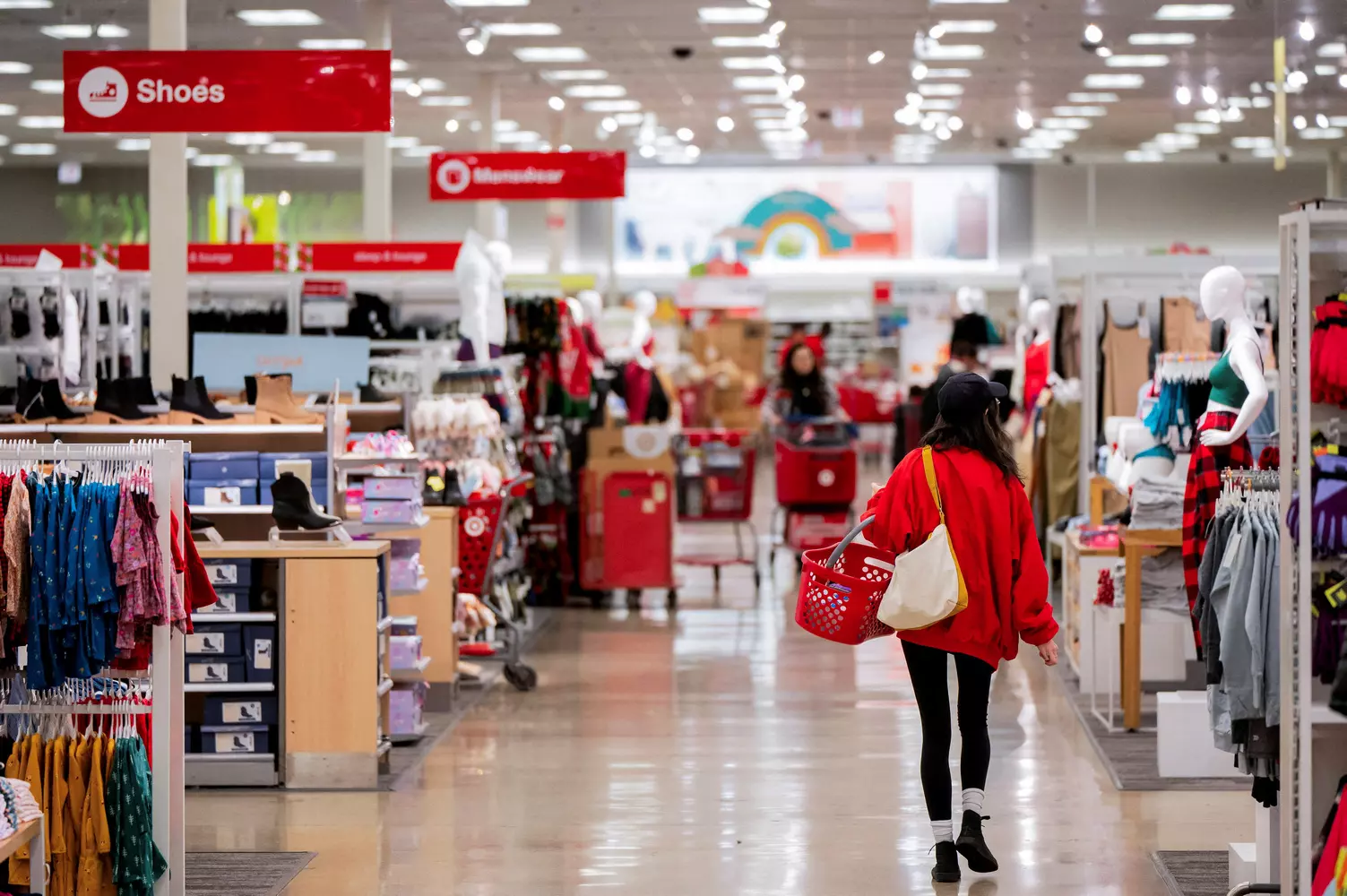
Whole Foods Market — Organic Food with Soul and a Mission
In a world where the pursuit of a healthy lifestyle and environmental responsibility has become a trend, Whole Foods Market stands not just as a supermarket, but as a true temple of organic products and ethical consumption. Founded in 1980 in Austin, Texas, this chain quickly gained cult status among those who choose natural and pure goods.
- 01. Why Whole Foods Became a Symbol of Organic in the USA
Whole Foods set itself an ambitious goal — to offer customers products that undergo strict quality control and meet high standards. All products — from fruits and vegetables to meat and dairy — are certified, often sourced from small family farms, and comply with the principles of sustainable agriculture. - 02. What Attracts Shoppers to Whole Foods
- Certified Quality and Safety
Every item is carefully checked to ensure it is free from gluten, GMOs, and artificial additives. Shoppers trust that their basket contains truly natural products. - Ready-to-Eat Food for Every Taste
From the freshest sushi and salads to hot soups and dishes from world cuisines — you can assemble a full meal without hassle. Especially popular are the sections with farm products and cheeses. - Rare and Imported Products
Whole Foods offers items rarely found in regular supermarkets: exotic superfoods, rare spices, unique honey varieties, premium oils, and organic wines.
Interesting fact: In 2017, Whole Foods was acquired by the e-commerce giant Amazon. This enabled ultra-fast delivery of groceries, and today, residents of major cities can receive organic products within just a couple of hours.
Visiting Whole Foods is a small ritual for many shoppers. It’s not just about choosing products but also about learning their origins, participating in master classes and tastings, and immersing oneself in the culture of healthy living.
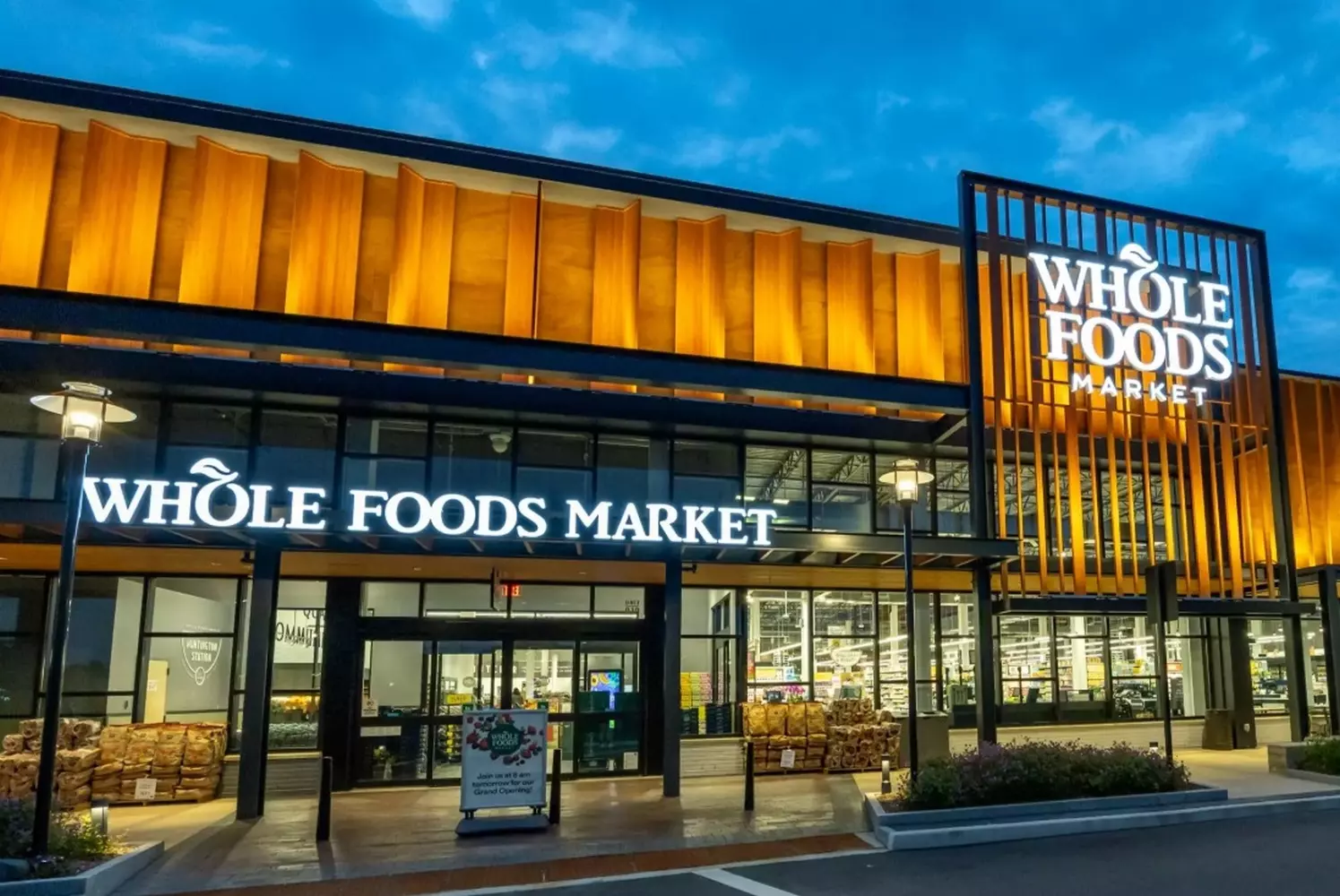
Sam’s Club — The Wholesale Store for the Savvy and Budget-Conscious
When it comes to big savings on bulk shopping, many Americans think of Sam’s Club — a membership-based warehouse store where wholesale buying meets real economy. Founded in 1983 as part of the Walmart corporation, Sam’s Club quickly became popular among families, entrepreneurs, and everyone who values high quality at a reasonable price.
- 01. What is Sam’s Club and Why is It Special?
Sam’s Club is a membership-only warehouse supermarket. By purchasing a membership, you gain access to vast store spaces filled primarily with bulk items — large packages, sets, and value bundles. - 02. Key Advantages of Sam’s Club
- Savings Through Volume
It’s a favorite for families, small retailers, and cafes. Bulk packages of groceries, household chemicals, electronics, and even furniture allow significant savings per unit. - Member’s Mark Brand
Sam’s Club’s private label, Member’s Mark, offers a wide range of products — from fresh foods and beverages to appliances and accessories. This brand is known for high quality comparable to leading global manufacturers, but at a lower price. - Member Services
Besides shopping, Sam’s Club offers additional services such as free tire checks, photo printing, pharmacy services, onsite restaurants and cafes, and fuel stations with competitive prices. - Online Shopping and Delivery
Members can order products online with options for home delivery or in-store pickup, making shopping as convenient as possible.
Interesting fact: The largest Sam’s Club in the world is located in Memphis, Tennessee, covering more than 16,000 square meters — a true giant among stores!
To shop at Sam’s Club, a membership card is required. Several options exist: a basic membership and a premium one offering extra bonuses and privileges. For many families and small businesses, the investment pays off after just a few purchases thanks to exclusive discounts and offers.
Why do shoppers choose Sam’s Club? It’s valued for its combination of quality, convenience, and real savings. It’s not just a supermarket but a community of savvy buyers who know the value of money and aren’t willing to overpay for brands or smaller packages. Shopping at Sam’s Club means:
- Access to high-quality groceries and household goods;
- Exclusive deals and promotions;
- Services that make bulk shopping easy and enjoyable.
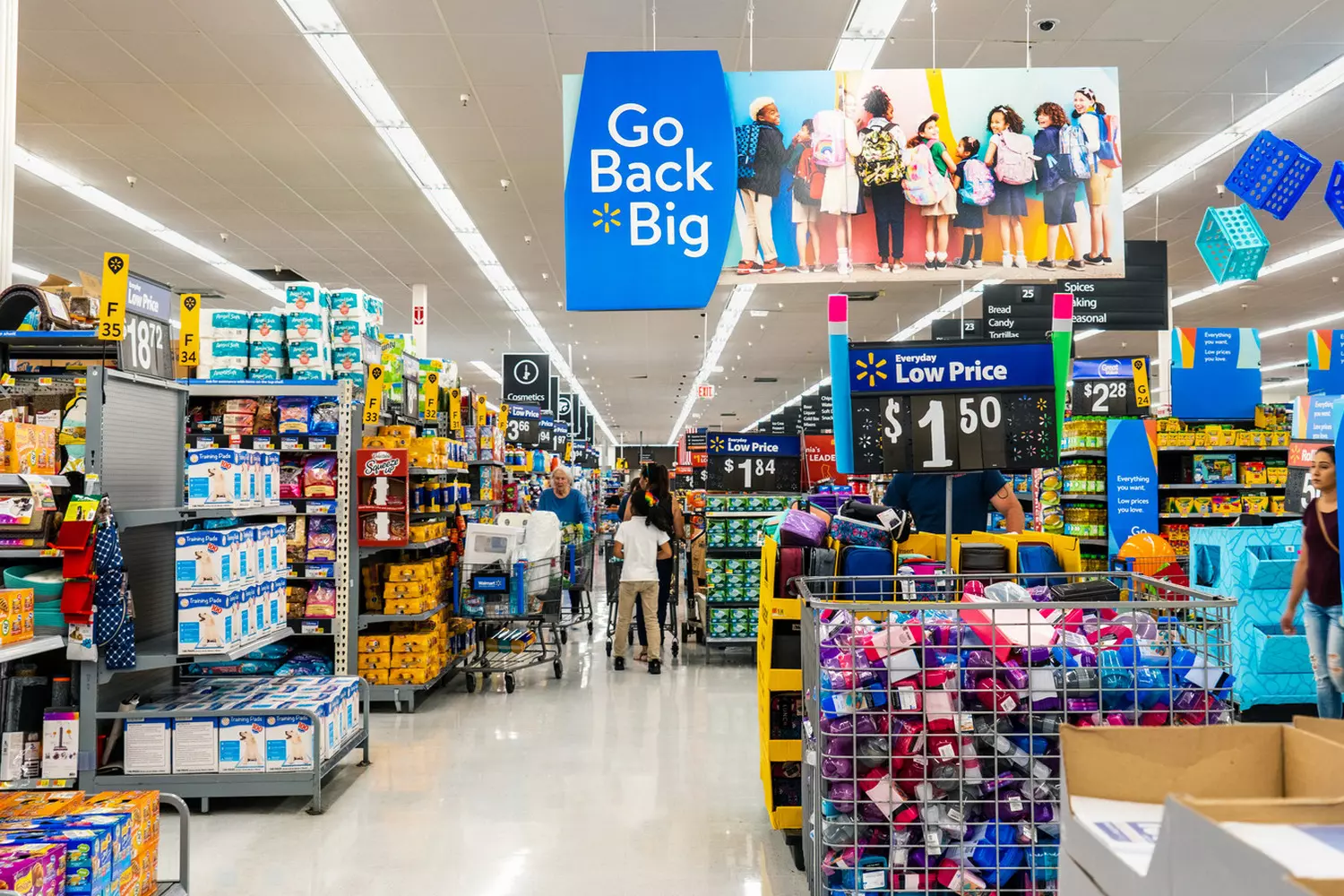
Aldi and U.S. Discount Stores — The Art of Saving Without Compromise
In the world of supermarkets, there is a special category — discount stores. These are shops that have made it their mission to offer customers quality products at the lowest possible prices, often by cutting out frills and complicated marketing tricks. Among them, the German chain Aldi holds a special place, winning American hearts with its honesty and simplicity.
Aldi — Minimalism and Speed That Work
Aldi arrived in the US in 1976 and quickly gained popularity thanks to its philosophy:
- Fewer brands — more savings
In the store, you'll find a minimal number of products on the shelves, but nearly all are Aldi's own brand. This allows strict quality control and lower prices. - Saving on logistics and service
Customers take and return carts themselves (for a small coin), stores have minimal staff, and the layout is kept very simple — all to reduce costs. - Lightning-fast checkouts
Cashiers at Aldi work so quickly that lines move fast even during peak hours. - Seasonal and limited-time products
Besides regular groceries, Aldi offers unique seasonal items — from garden tools to kitchen gadgets — all at very attractive prices.
Other Discount Stores Winning Over the US
- WinCo Foods
A chain with a union history, focused on shoppers who value even greater savings. Many products are sold in bulk here, and prices are generally lower than most competitors. - Grocery Outlet
A store focused on deals and clearance sales. You can find last season’s products or liquidation batches at incredibly low prices, turning grocery shopping into a real treasure hunt. - Food 4 Less
Part of the Kroger network, this discount store offers a wide assortment with an emphasis on basics. Here, practicality and comfortable shopping without extra costs are valued.
Why are discount stores so popular? In times of economic uncertainty and rising prices, more people seek ways to save without sacrificing quality. Discount stores offer:
- Transparent pricing — no tricks or marketing gimmicks;
- Good quality private labels;
- A convenient format for quick and efficient shopping;
- A wide selection of seasonal and unexpected products at low prices.
Interesting fact: Many major chains have started adopting elements of the discount model — trimming assortments, developing private brands, and simplifying store layouts to compete with Aldi and similar stores.
Discount stores are more than just shops — they are the answer to the modern shopper’s demands: quality, speed, and honest prices. It’s a world where every purchase is a bargain, and unnecessary items simply don’t make it into the cart.
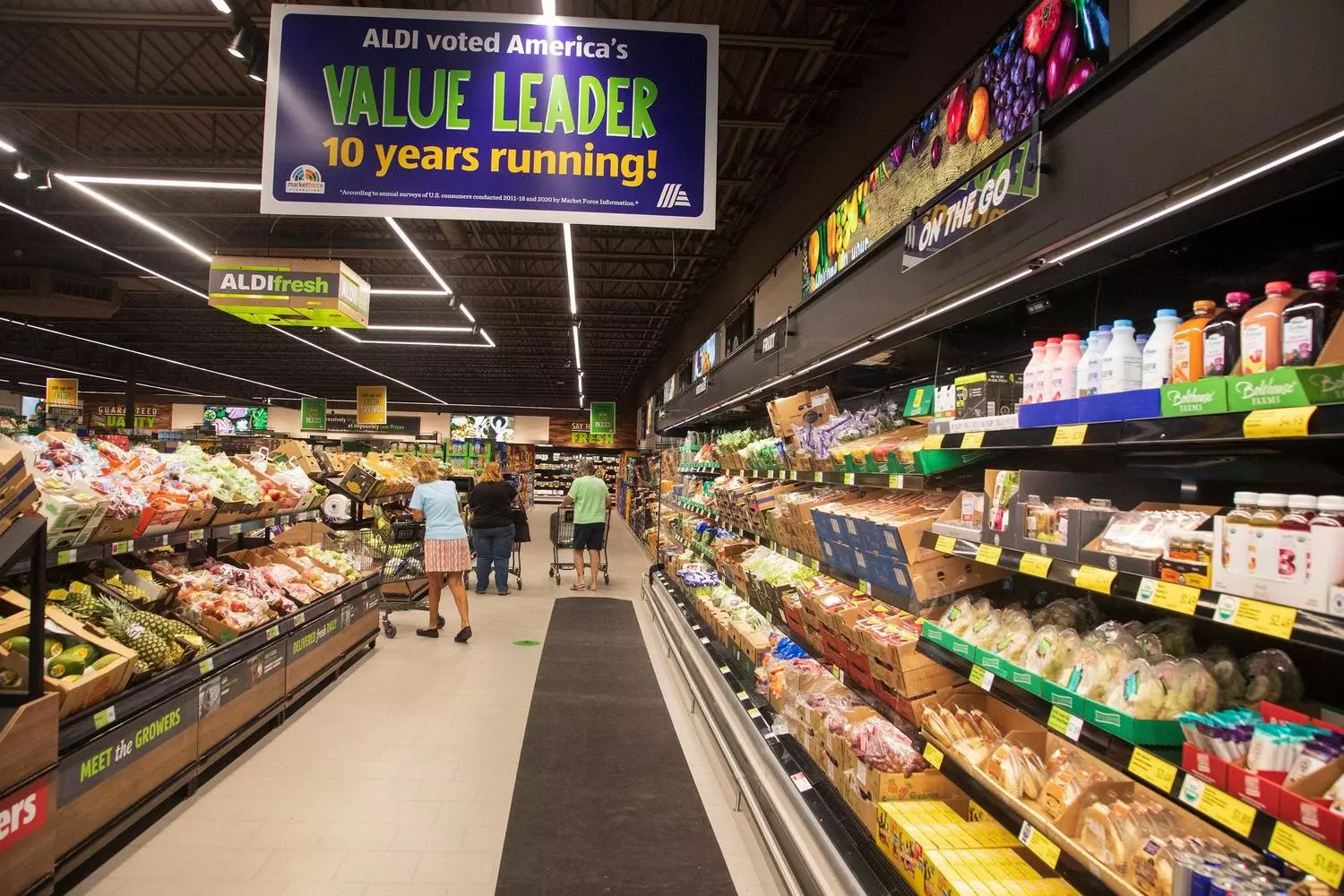
Elite Supermarkets in the USA — Shopping for Gourmets and Quality Connoisseurs
In the world of American retail, there is an elite category — supermarkets that prioritize not just a wide assortment, but a unique shopping experience, premium product quality, and exceptional service. These stores are places where healthy eating, environmental responsibility, and gastronomic pleasure go hand in hand.
- 01. The Fresh Market — style and quality in every product
The Fresh Market offers a European-style supermarket with a focus on freshness and product presentation. Here, original cheeses, sausages, seafood, and seasonal products are beloved.
- Beautiful displays and interior design;
- Lots of products from local farmers and artisanal producers;
- Regular tastings and culinary master classes;
- Premium ready meals and delicacies.
In Florida, The Fresh Market is especially popular thanks to its combination of fresh seafood, exotic fruits, and a resort-town atmosphere. There are many local delicacies and organic products ideal for coastal living.
- 02. Gelson’s Markets — the luxury of Southern California
Gelson’s is a supermarket associated with wealth and the coastal California lifestyle. Here, a classic range of organic and premium products combines with first-class service.
- Attention to detail and exclusive assortment;
- A wide selection of organic and gluten-free products;
- Departments with rare seafood and exotic fruits;
- Personalized service and consultant assistance.
- 03. Dean & DeLuca (New York) — metropolitan gastronomic chic
Historically, Dean & DeLuca was a cult gastronomic store in New York, offering premium products from around the world. Although the chain has since shrunk, its spirit lives on in several boutiques and gourmet shops, becoming a symbol of urban elite and gourmets. - 04. Central Market (Texas) — paradise for farm-fresh product lovers
Central Market is part of the H-E-B chain and a true gastronomic hub for Texans. Its huge selection of organic products, freshest vegetables, farm cheeses, and signature wines makes it a magnet for gourmets and quality seekers. - 05. Metropolitan Market (Seattle) — Northwest focus on quality
Metropolitan Market is a chain of premium supermarkets around Seattle, known for its eco-friendly approach, large organic selection, and wide range of farm products. The store combines comfort with attention to detail, appreciated by locals. - 06. Balducci’s (New York and other cities) — tradition and exclusivity
Balducci’s is a family-owned chain famed for its traditional approach to quality and attention to detail. Here you can find rare cheese varieties, meat delicacies, and fresh premium products.
Why do people choose elite supermarkets?
Shopping here is not just a process but a ritual:
- Guarantee of product quality and origin;
- The opportunity to try new tastes and dishes;
- A comfortable atmosphere without rush or chaos;
- Services of personal chefs, nutritionists, and consultants;
- Participation in events and tastings.
Interesting fact: Many of these elite supermarkets actively support local farmers and artisans, thereby creating a sustainable supply chain and strengthening the city’s connection with nature.
Elite supermarkets are not just stores; they are spaces where shopping turns into pleasure, and caring about health and quality becomes a lifestyle.
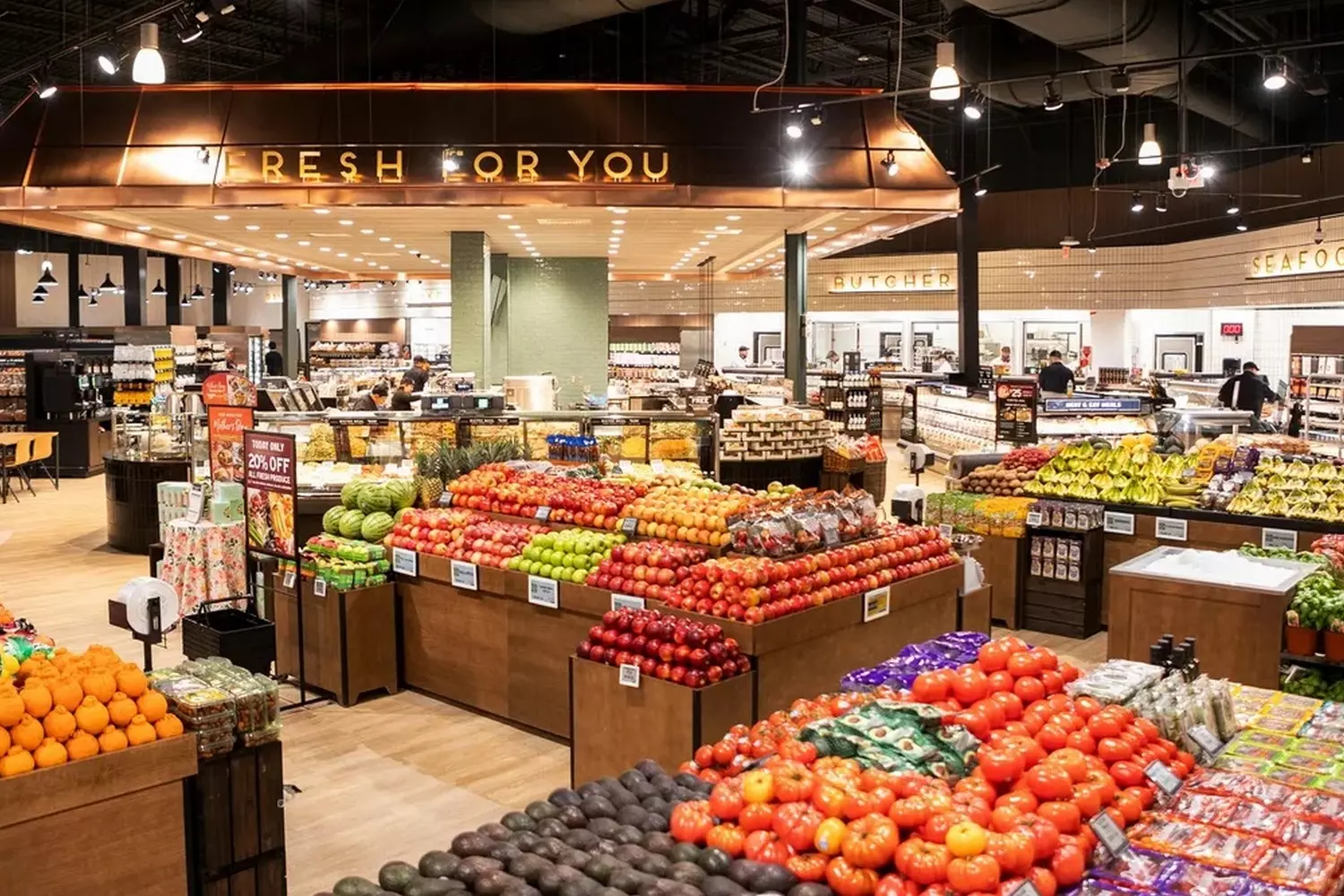
Regional Stars of U.S. Supermarkets — Local Flavor and Unique Service
In every part of America, there are supermarkets that are not just places to buy groceries but become a true part of the local community's life. These chains are deeply integrated into the culture and traditions of their regions, possess unique features, and enjoy genuine affection from their customers. Let's look at three vivid examples — Publix, H-E-B and Albertsons.
- 01. Publix — the Queen of Florida
Founded in 1930 in Tampa, Publix has become an integral part of life for millions of Floridians. This chain is famous for its exceptional service and atmosphere where every customer feels like royalty.
- High level of service
At Publix, it is customary to assist customers with everything — from loading groceries into the car to personalized advice on product selection. - Known for its bakeries and ready-made meals
Fresh pies, cookies, sandwiches, and salads — there are many options here to grab a quick bite or take to a celebration. - Community and local support
Publix actively participates in charity and supports local producers, which customers truly appreciate.
- 02. H-E-B — the pride of Texas
H-E-B is not just a supermarket but a true symbol of Texas. Founded in 1905, the chain counts hundreds of stores and is known for its attention to local traditions.
- Wide range of local products
Local barbecue varieties, spices, fresh farm vegetables, and fruits — all this can be found on H-E-B's shelves. - Innovation and convenience
Stores feature cooking schools, tastings, online ordering with delivery, and special services for busy shoppers. - Support for local business
H-E-B actively collaborates with Texas producers and farmers, helping to develop the regional economy.
- 03. Albertsons — a strong player in the West
Albertsons is a large chain covering most western US states. Founded in 1939, the chain offers a wide assortment and places great emphasis on quality and convenience.
- Variety and quality
Albertsons is known for its meat and seafood departments as well as a wide selection of organic and gourmet products. - Digital technologies
It actively implements mobile apps for easy ordering and loyalty programs. - Flexible formats
The chain includes both large supermarkets and smaller stores in urban areas, making it accessible to different customer categories.
Why are regional chains so important?
- Understanding local tastes and traditions
Each chain tailors its assortment to the preferences of its region. - Local economy
By shopping here, you support local farmers, producers, and workers. - Unique service
Local chains often offer a more personalized approach than large national players.
Interesting fact: H-E-B regularly ranks among the best employers in the USA thanks to its corporate culture and attention to employees.
These regional supermarkets are true stars of their states, uniting people through products, traditions, and care. They make shopping not just a purchase but a part of everyday culture.
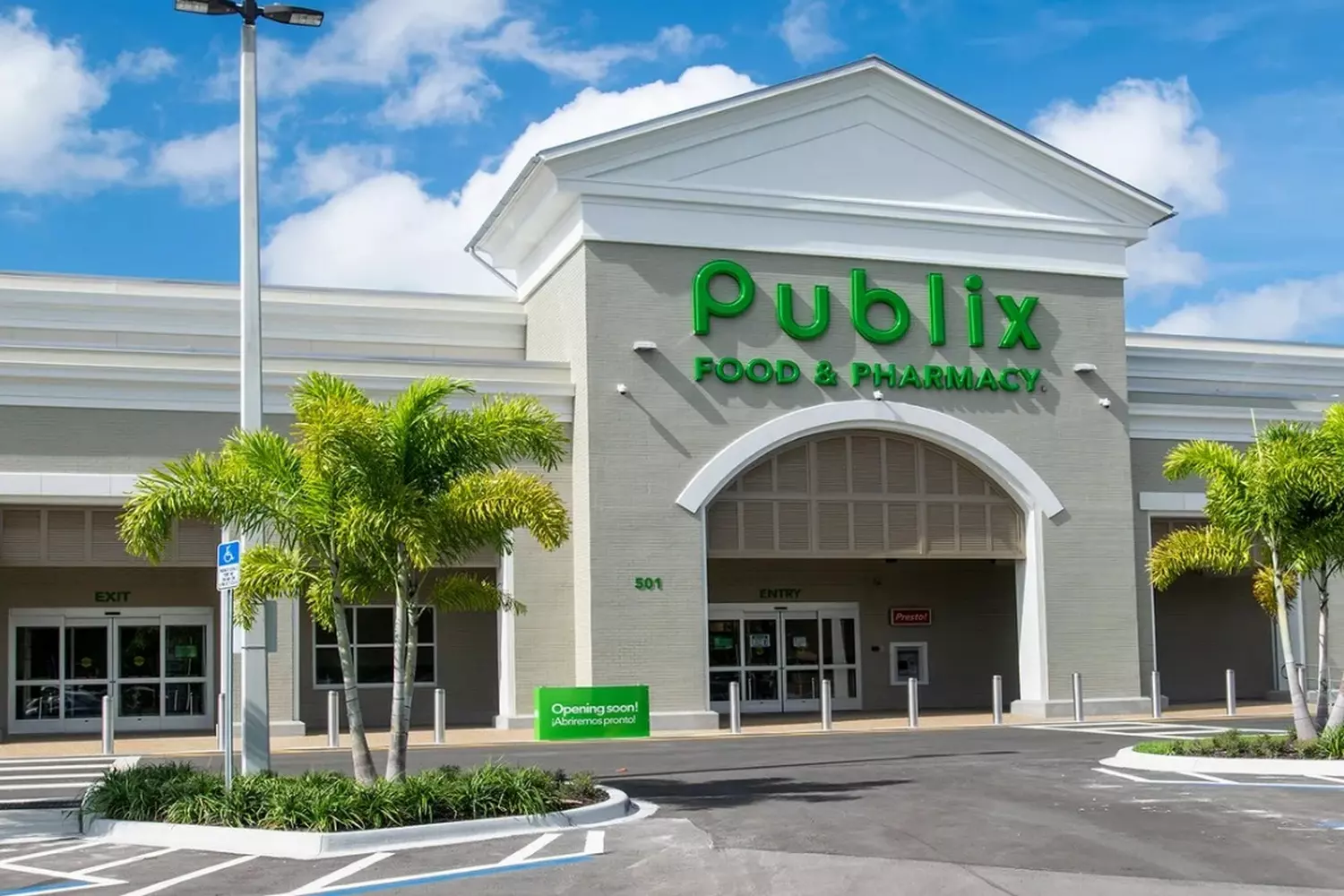
Furniture and Home Goods Store Chains — Everything for Comfort and Coziness Under One Roof
In the USA, there is a special category of large retail chains entirely focused on home goods: furniture, decor, textiles, lighting, and household accessories. These are not just stores — they are whole spaces dedicated to creating comfort and style, where you can find everything to make your home both functional and beautiful. Food products are not sold here, but the assortment impresses with its variety and quality.
- 01. IKEA — Swedish minimalism and affordable design
IKEA is a world leader in furniture and home goods. Thanks to its thoughtful solutions and affordable prices, it has won the hearts of millions.
- Furniture for every room and situation
From compact shelving units to complete kitchen and bedroom sets. - Textiles and decor
Throws, curtains, rugs, and decorative elements for any interior style. - Functional accessories
Storage systems, kitchenware, lighting. - Unique shopping experience
Stores feature showrooms with ready-made solutions and cafés serving Swedish delicacies.
- 02. Ashley HomeStore — American classic and style
Ashley HomeStore is one of the largest furniture chains in the USA with more than 800 stores across the country.
- Wide range of furniture
From classic to modern collections. - Special focus on comfort
Chairs, sofas, and beds with orthopedic solutions. - Decor and accessories
Rugs, lighting, mirrors, and home textiles. - Guarantees and financing programs
Make purchases more affordable and comfortable.
- 03. HomeGoods — a store for lovers of unique style
HomeGoods is a chain specializing in unique decor, textiles, and home accessories.
- Constantly updated assortment: new collections every day.
- Rare and designer finds: from vintage pieces to modern trends.
- Prices lower than traditional furniture showrooms.
- Stores located nationwide, perfect for spontaneous inspiration searches.
- 04. Costco — furniture and home goods at wholesale prices
Although Costco is a membership club store, it is famous for a large selection of quality furniture, appliances, and home goods.
- Wholesale prices on sofas, mattresses, dining sets.
- The Kirkland Signature brand — a guarantee of quality and reliability.
- Delivery and return services make shopping convenient.
- 05. Home Depot — everything for repair and improvement
Home Depot is the largest chain of stores for repair, construction, and home improvement. Both professionals and DIY enthusiasts find everything they need here.
- Wide selection of tools, building materials, and plumbing.
- Products for outdoor and indoor landscaping: garden equipment, paints, lighting.
- Furniture for gardens and outdoor spaces.
- Training courses and consultations: help to master repairs and finishing yourself.
- 06. Crate & Barrel — modern style and quality
Crate & Barrel is a chain focused on modern design and high-quality home goods.
- Elegant furniture and interior items: from dining tables to textiles.
- Premium kitchenware and tableware.
- Stylish decor and lighting solutions.
- High level of service and personalized customer approach.
- 07. Bed Bath & Beyond — everything for bathroom, kitchen, and comfort
Bed Bath & Beyond is a large chain specializing in products for bathrooms, kitchens, and household essentials.
- Wide assortment of textiles: towels, curtains, bedding.
- Kitchen gadgets and cookware.
- Organizers, air fresheners, and home accessories.
- Frequent promotions and loyalty programs.
Why do Americans choose these chains?
- Specialization and wide selection. These stores offer not just "everything for the home," but specifically furniture and decor with attention to detail.
- Different price categories — from budget to premium.
- Comfortable shopping experience: showrooms, consultations, delivery, and assembly.
- Inspiration opportunities: exhibition halls and styled interiors.
Furniture and home goods stores are real centers of inspiration and convenience where you can find everything to create your perfect personal space.
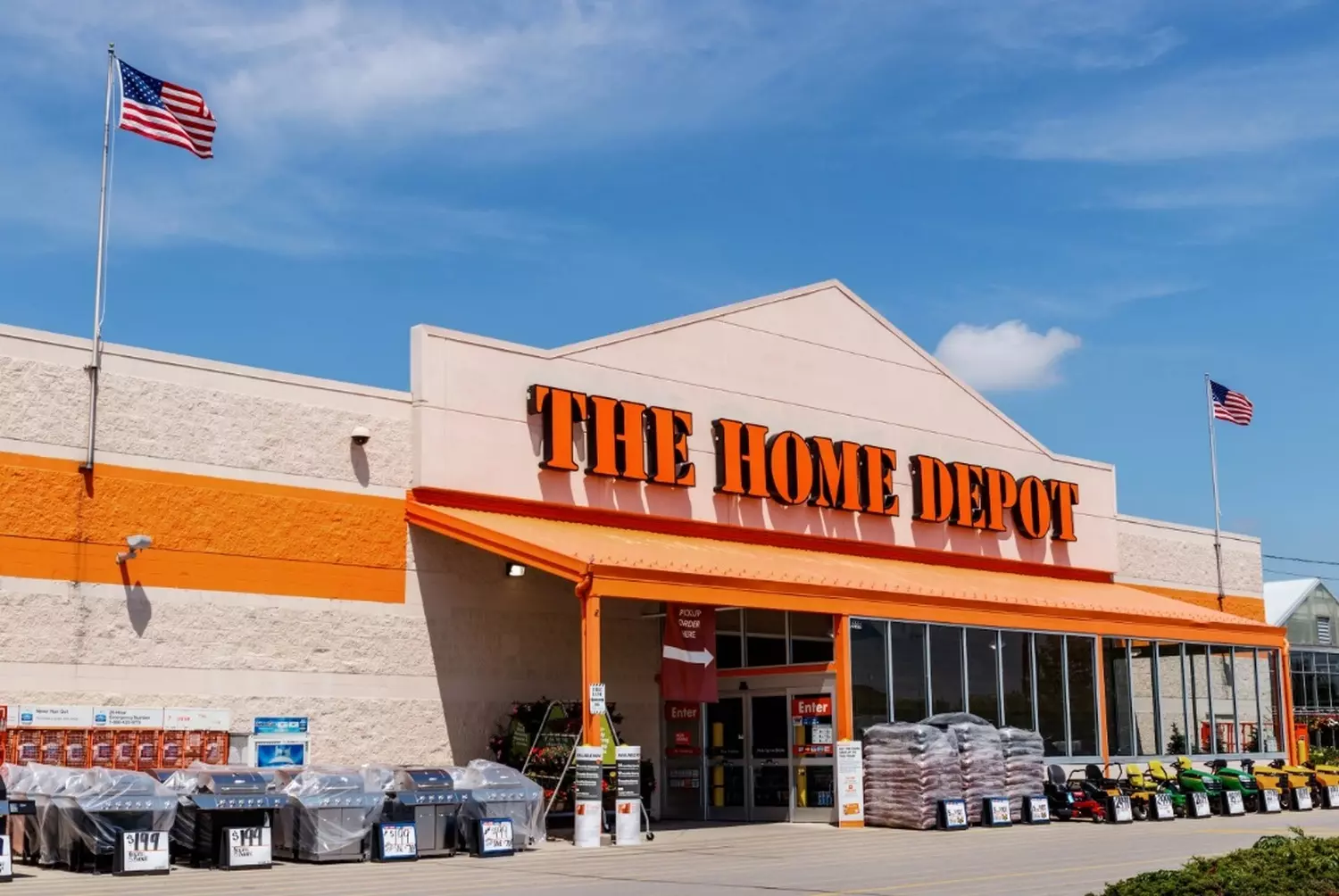
How Americans Shop: Habits, Secrets, and Shopping Insights
Shopping in the USA is not just a trip to buy groceries, but a whole culture with its own rules, traditions, and even hobbies. Americans approach choosing stores, shopping frequency, and saving money very thoughtfully, and sometimes it becomes a genuine pastime. Let’s take a closer look at how residents of the United States shop and what every tourist should know to feel this rhythm of life.
- 01. Frequency and volume of purchases
There is no universal standard in the US for how often people go to the supermarket — it depends on lifestyle, family budget, and habits.
- Most Americans shop 1–2 times a week, stocking up on groceries and essentials.
- Bulk shopping is a trend among families, especially in big cities and suburbs where club stores like Costco are popular. People buy for several days or even weeks ahead.
- Small trips for fresh products and quick snacks happen 2–3 times a week, especially for those living in cities who prefer fresh vegetables, fruits, and ready meals.
The volume of purchases varies: in rural areas and suburbs, people tend to buy more, while in big cities, they buy less per trip but visit various stores.
- 02. What and how much do they buy?
- Basic necessities: milk, bread, eggs, meat, vegetables, and fruits.
- Ready meals and semi-prepared foods — very popular due to the fast pace of life.
- Beverages, including coffee and soda, often bought in large packages.
- Household items — cleaning products, toilet paper, personal hygiene products.
In supermarkets with bulk sales, you can buy goods in large packages, which is advantageous for big families and those who like to stock up.
- 03. Small neighborhood stores
Yes, there are many small grocery stores and mini-markets in the US, especially in densely populated urban areas.
- Convenience stores — open 24/7 with a limited range: snacks, drinks, basic groceries. They are convenient for quick purchases but prices are higher than in large supermarkets.
- Local delis and markets offer fresh vegetables, meat, and locally produced goods. This more “homey” format is valued for quality and personalized service.
- These stores are often visited for small purchases and unexpected needs.
- 04. Coupons and saving: a true art
Americans are masters of saving money, and many treat using coupons and discounts as an engaging hobby.
- Coupons come as special booklets, apps, and printouts offering discounts on products. They can be combined with sales and loyalty programs.
- Many families spend hours planning purchases, collecting coupons, and mapping routes to maximize savings.
- There are even communities and forums where people exchange tips and “hunt” for the best deals.
- 05. Discount days and loyalty programs
- Many chains hold regular discount days: for example, “buy two get one free,” discounts on fresh products on specific weekdays, etc.
- Loyalty programs allow accumulating points, receiving personalized offers, and special prices.
- Some stores have “discount hours,” when prices drop on items nearing their expiration date.
For many Americans, a trip to the supermarket is not just a necessity, but an opportunity to spend time with family, meet neighbors, try new products, and enjoy the process.
- In big cities, it may be part of a weekend or weekly planning.
- In suburbs and rural areas, stores often become social hubs and meeting places.
Interesting fact: In the USA, there is a whole culture of “coupon hunting”, with YouTube bloggers dedicated to saving money and reviewing sales, and some people even make extra income from this.
Understanding these nuances will help you not only save money but also feel the spirit of true American shopping — because it’s much more than just buying things!
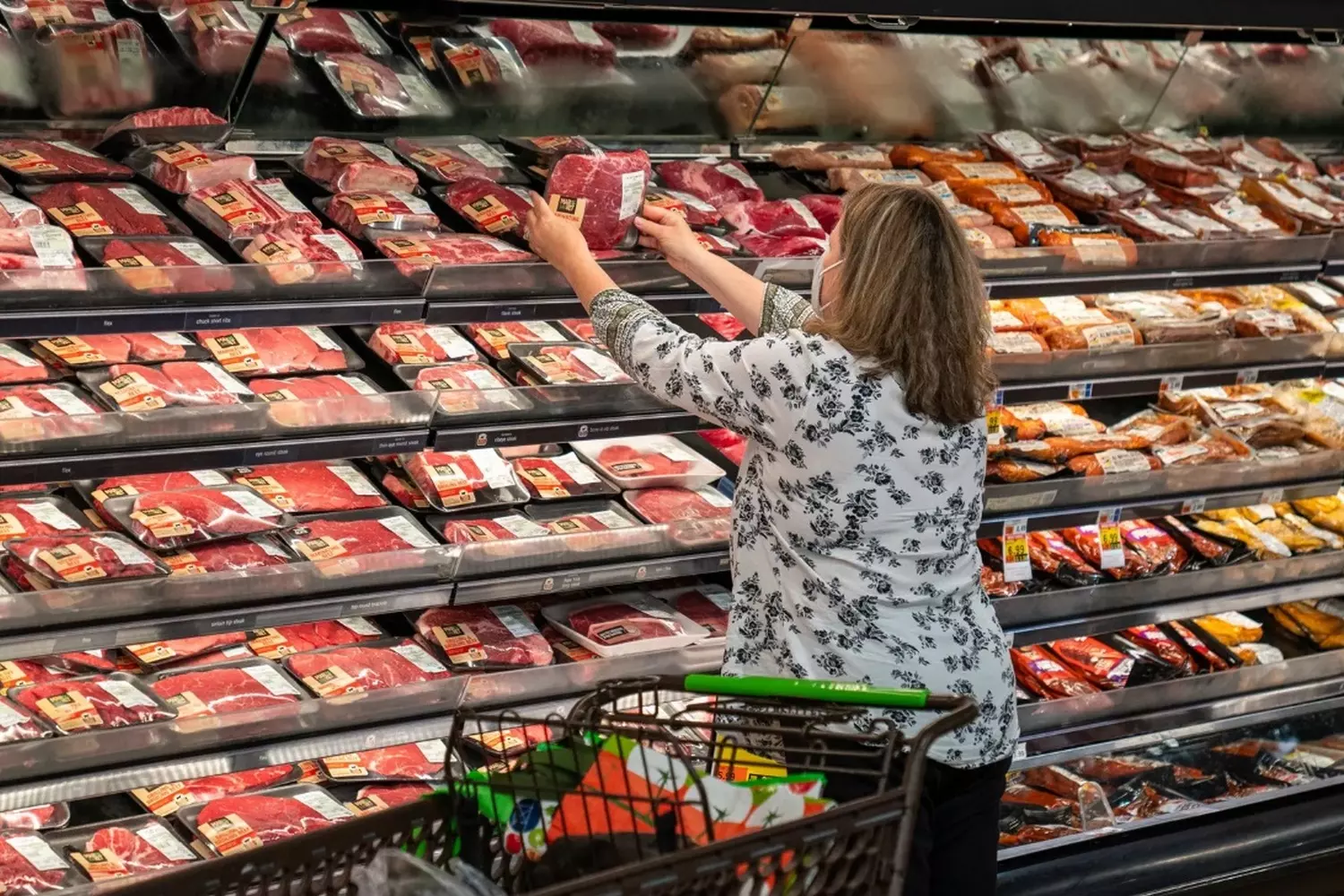
How to Choose the Right Supermarket for You: Tips for Comfortable and Smart Shopping in the USA
Choosing a supermarket is not just a matter of convenience. It reflects lifestyle, budget, and even values. In the USA, where the retail market is vast and diverse, finding the perfect store means making shopping not only practical but also enjoyable. Here are some tips to help you navigate this variety and choose a supermarket that truly suits you.
- 01. Saving comes first — Walmart, Aldi, WinCo
If you’re looking to buy groceries and household goods at the best prices, these chains are your best friends.
- Walmart is famous for low prices thanks to large-scale purchasing and a wide product range. Here you can buy everything — from food to household appliances — at affordable prices.
- Aldi is a German discount chain with a minimalist approach: few brands, but many quality private labels and fast checkout lines.
- WinCo is a self-service chain where most products are sold by weight, allowing you to pay only for the exact quantity you need.
When shopping at these supermarkets, it’s important to plan your list and avoid impulse buys to maximize savings.
- 02. Bulk shopping — Costco
Costco is a membership warehouse club, perfect for those who prefer to buy for several weeks or for large families.
- Large packages and wholesale prices significantly reduce the cost per item.
- A wide assortment of groceries, appliances, clothing, and even gasoline.
- The legendary $1.50 hot dog is a symbol of great deals here.
However, to avoid overspending, pay attention to expiration dates and plan bulk purchases carefully.
- 03. For health and quality — Whole Foods
If organic, eco-friendliness, and ethical sourcing matter to you, Whole Foods is the ideal choice.
- Strict supplier selection and certified products free from GMOs, pesticides, and artificial additives.
- A rich selection of vegan, gluten-free, and specialty products.
- Ready meals made from fresh ingredients and exotic delicacies.
Shopping here is an investment in health, but the higher prices require budget awareness.
- 04. For enjoyable shopping and inspiration — Target and regional chains
If you want to combine convenience, quality, and style, pay attention to Target and local regional supermarkets.
- Target offers a pleasant atmosphere, tidy aisles, and stylish products not only for the kitchen but also for the home.
- Regional chains like Publix in Florida or H-E-B in Texas deeply understand local tastes and offer top-notch products and service.
- These stores often host tastings, promotions, and cultural events.
Shopping here becomes not a routine but a lifestyle.
- 05. Important advice: a supermarket reflects the neighborhood
As Americans say: “In America, a supermarket is a mirror of the neighborhood. Visit a Walmart in a rural area — you’ll see one thing. Visit a Whole Foods in New York — something completely different.” This means that even within the same chain, the assortment and format can vary greatly depending on location. So it’s worth visiting different stores to understand what suits you best. - 06. How to combine?
- You can mix and match your shopping — bulk buys at Costco, daily needs at Target, and organic products at Whole Foods.
- Use loyalty programs and discounts from different chains for maximum benefit.
- Don’t be afraid to experiment and switch stores depending on the situation and season.
Choosing a supermarket is a balance between price, quality, convenience, and atmosphere. Understanding your priorities will help make shopping as comfortable and rewarding as possible.
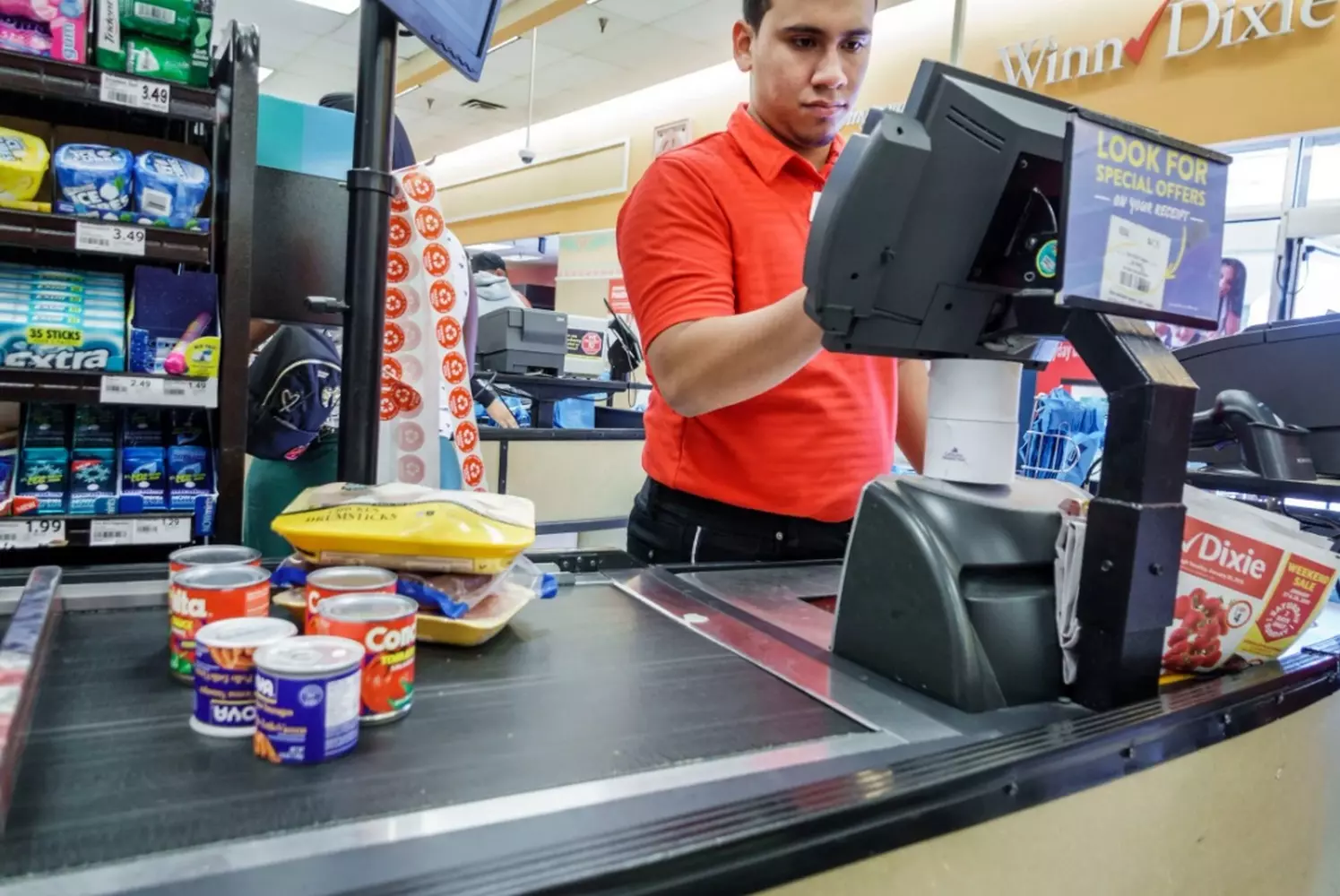
Secrets of American Supermarkets: 10 Facts That Will Surprise You
American supermarkets are not just places to buy groceries; they are entire universes with their own traditions, tricks, and even quirks. From giant milk cartons to electric scooters for people with disabilities and clever marketing tactics — every shopping trip here turns into a little adventure. Let’s explore what makes these stores so unique and what secrets they hide.
- 01. Shopping carts for customers with disabilities
In American supermarkets, you’ll find not only regular carts but also electric scooters for people with disabilities or those who have difficulty walking due to weight issues. This is part of an inclusive culture that makes shopping accessible for everyone. - 02. Price tags don’t include tax
The price shown on a product in the U.S. is not the final amount. Sales tax (ranging from 2% to 10%, depending on the state) is added only at the checkout. This often surprises tourists who see a higher total on their receipt than expected. - 03. Gallons of milk and buckets of ice cream
Americans love buying products in huge packages. A standard milk bottle is a gallon (3.78 liters), and ice cream is sold in buckets. Even mayonnaise can come in a liter jar — apparently for drenching a whole salad at once. - 04. Returns on almost any product
In the U.S., you can return almost anything — even underwear or opened food packaging. The main thing is to keep the receipt. Some stores accept returns months after purchase. - 05. “Smart carts” with cameras
Some stores have shopping carts equipped with built-in cameras and scales. They automatically calculate your total, and you can pay right at the handle terminal — no checkout line needed. New “smart carts” not only total your purchases but also analyze your path through the store, time spent at displays, and even what you pick up and put back! - 06. “Left-digit pricing” — $9.99 instead of $10
A psychological trick: $9.99 feels much cheaper than $10, even though the difference is just one cent. This is one of the oldest marketing tactics still very effective today. - 07. “Drunk carts” — special carts for alcohol
In some states with strict alcohol laws (like Pennsylvania), there are separate carts for alcohol. These carts can’t be taken out of the liquor section, and cashiers check IDs right there. - 08. Secret price codes on tags
If the price ends with .97, the item is marked down and won’t be restocked. Prices ending with .88 or .00 indicate manager markdown sales. And .99 is just a marketing trick. - 09. Huge pet food sections
Americans spend more on pet food than on baby food. So supermarkets dedicate entire shelves to canned cat and dog food — sometimes even offering samples. - 10. “Happy hour” for seniors
Many stores (like Dollar General) offer 10-15% discounts in the mornings for elderly shoppers. In some states, seniors can get free coffee while shopping. - 11. “Secret shoppers” even track your eyes
Large chains hire specialists who monitor shoppers’ eye movements using hidden cameras. This helps determine which shelves catch the longest attention, so they can place the most profitable items there. - 12. Walmart has its own police force
Yes, the largest U.S. chain has its own law enforcement! They investigate theft, fraud, and even murders that occur on store premises. - 13. Costco sells coffins
In some states, this retail giant offers not only giant packs of toilet paper but also... coffins at wholesale prices. A true “everything included” from cradle to grave. - 14. The magical power of scents
Many supermarkets artificially pump the scent of freshly baked bread even if there’s no bakery in the store. This smell can boost sales by 300%! - 15. Alcohol sections are under FBI surveillance
By law, all cameras in alcohol departments must keep recordings for 7 years and provide them to federal agents upon request.
American supermarkets are a mix of convenience, marketing, and sometimes absurdity. Now that you know these facts, you’re unlikely to see a trip to the supermarket as routine. It’s a real battle for your wallet, where every square meter is meticulously designed. Should you play by their rules? That’s up to you!
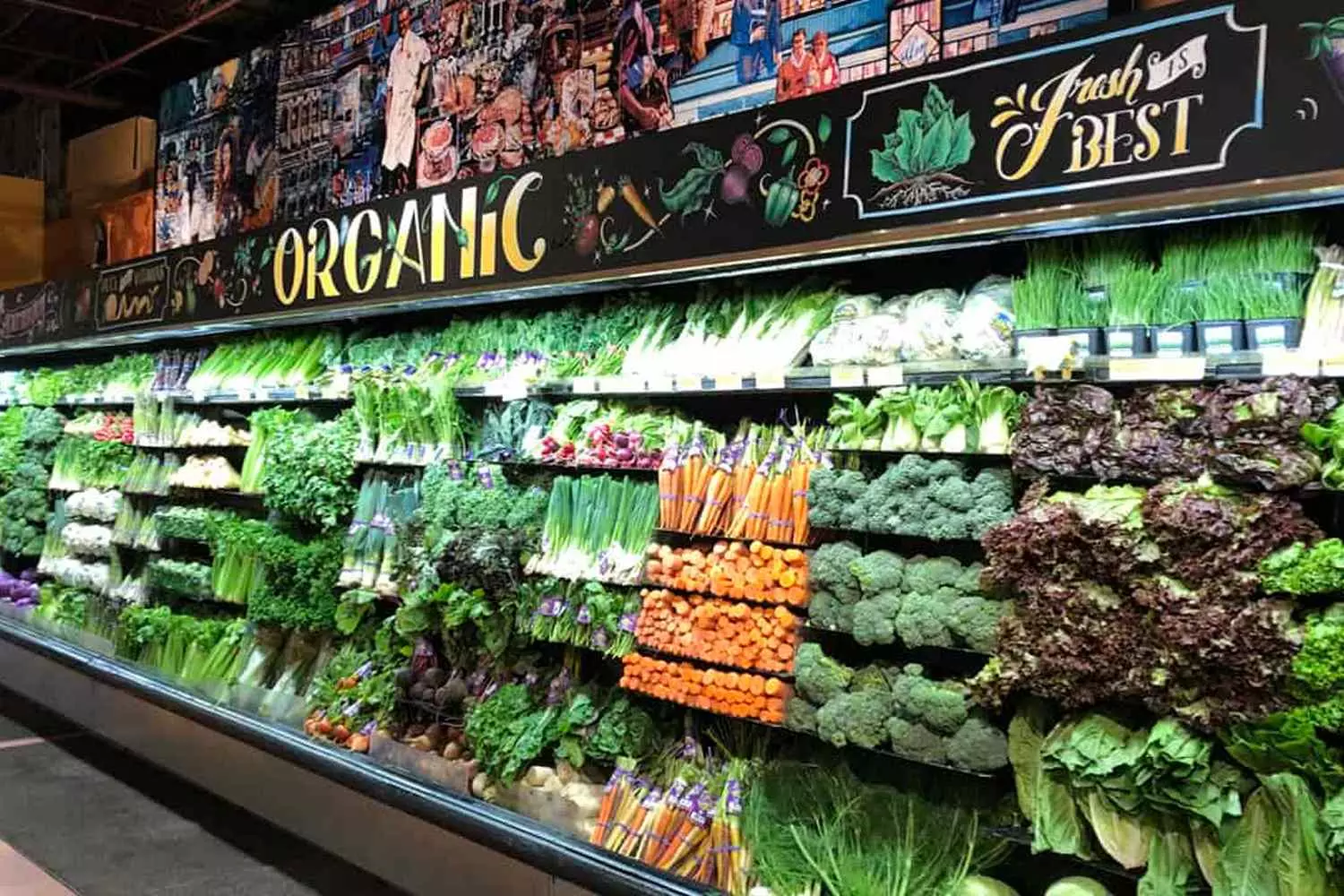
Discover the USA Through Supermarkets with American Butler
Supermarkets in the USA are not just places to shop — they are true cultural hubs reflecting the lifestyle and preferences of millions of Americans. To truly understand this phenomenon and get the most enjoyment out of your shopping experience, it’s important to know where to go, what to look for, and how to make the best deals.
The American Butler team will help you:
- Choose stores that perfectly match your taste and budget;
- Discover the secrets of local “tricks” and useful life hacks;
- Get acquainted with authentic American culture through the lens of everyday shopping.
We will help you organize your trip to the USA to be as comfortable and interesting as possible. We’ll select the best routes and share local insights, including shopping secrets and unique places worth visiting.
May your journey be filled with vivid impressions and valuable discoveries — from iconic supermarkets to the most remarkable landmarks!














